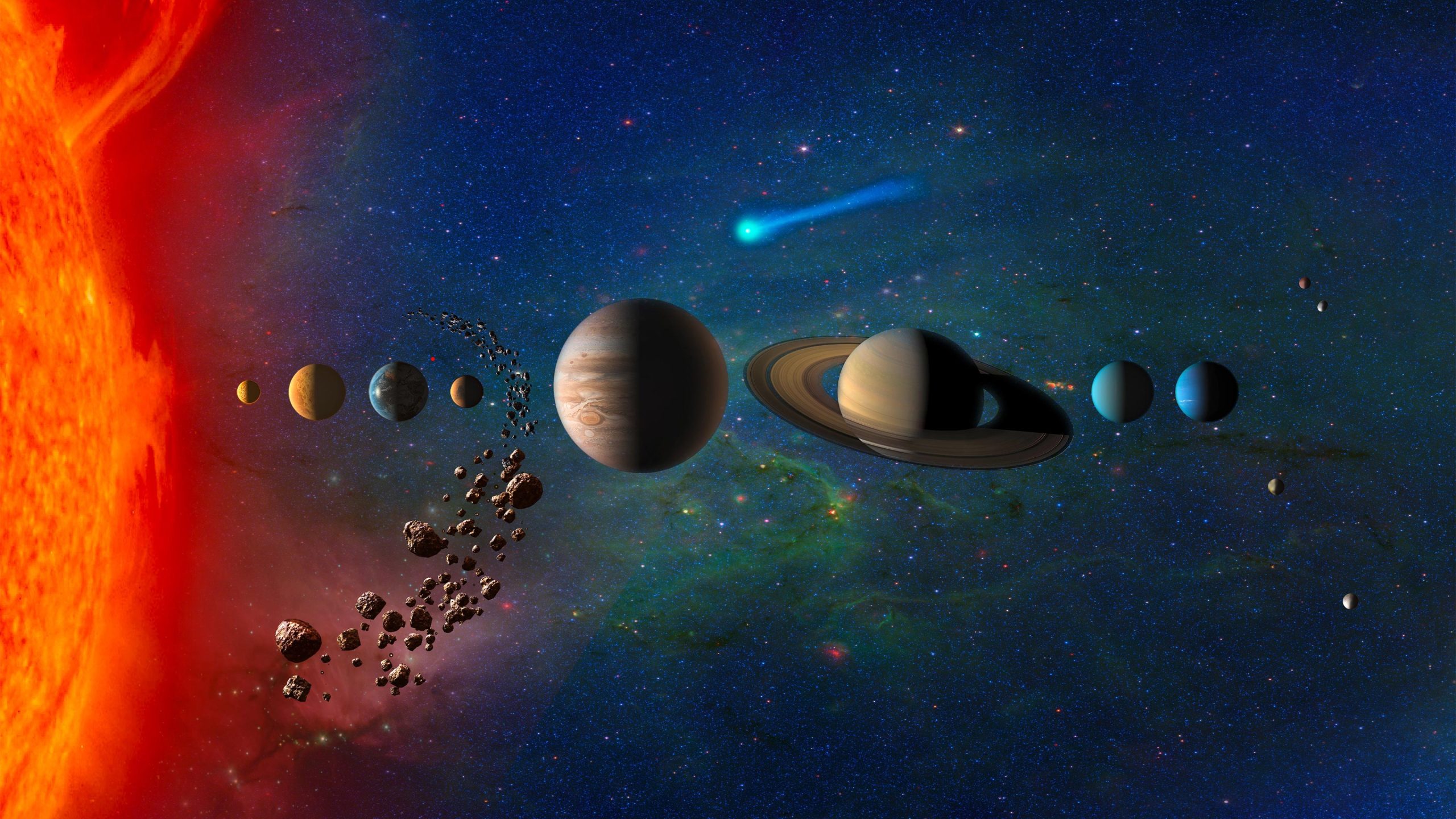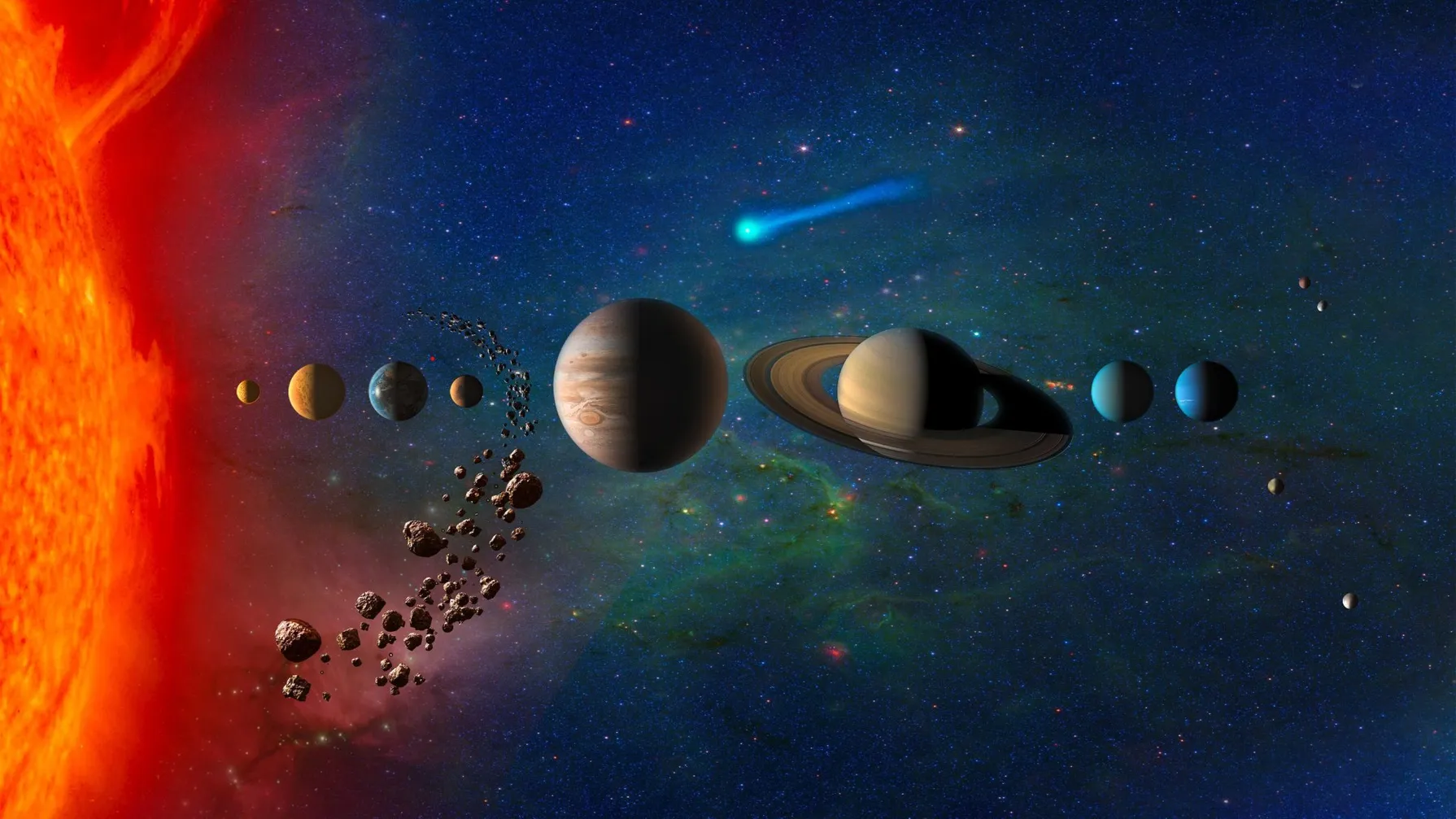Entre as tarefas escolhidas para extensão estão o InSight,[{” attribute=””>Mars Reconnaissance Orbiter, Mars Odyssey, and Curiosity, all of which have been critical to expanding our understanding of the Red Planet.
Following a careful review, NASA has extended the planetary science missions of 8 of its spacecraft due to their scientific productivity and potential to advance our knowledge and understanding of the solar system and beyond.
The missions – Mars Odyssey, Mars Reconnaissance Orbiter, MAVEN, Mars Science Laboratory (Curiosity rover), InSight lander, Lunar Reconnaissance Orbiter, OSIRIS-REx, and New Horizons – have been selected for continuation, assuming their spacecraft remain healthy. Most of the missions will be extended for 3 years; however, OSIRIS-REx will be continued for 9 years in order to reach a new destination, and InSight will be continued until the end of 2022, unless the spacecraft’s electrical power allows for longer operations.
Each extended mission proposal was reviewed by a panel of independent experts drawn from academia, industry, and NASA. In total, more than 50 reviewers evaluated the scientific return of the respective proposals. Two independent review chairs oversaw the process and, based on the panel evaluations, validated that these 8 science missions hold substantial potential to continue bringing new discoveries and addressing compelling new science questions.
Beyond providing important programmatic benefit to NASA, several of these missions promise multidivisional science benefits across NASA’s entire Science Mission Directorate (SMD), including their use as data relays for Mars surface landers and rovers, as well as to support other NASA initiatives such as Commercial Lunar Payload Services (CLPS).
“Extended missions provide us with the opportunity to leverage NASA’s large investments in exploration, allowing continued science operations at a cost far lower than developing a new mission,” said Lori Glaze, director of the Planetary Science Division at NASA Headquarters in Washington. “Maximizing taxpayer dollars in this way allows missions to obtain valuable new science data, and in some cases, allows NASA to explore new targets with totally new science goals.”
Two of the extended missions, MAVEN and OSIRIS-REx, welcome new principal investigators (PIs).
OSIRIS-APEX (Principal Investigator: Dr. Daniella DellaGiustina, University of Arizona): The Origins, Spectral Interpretation, Resource Identification, Security-Regolith Explorer (OSIRIS-REx) mission is currently on its way back to Earth to deliver the samples of asteroid Bennu that it collected in 2020. Dante Lauretta, OSIRIS-REx PI, will remain in place for the primary mission, while DellaGiustina begins her role as the newly named PI for OSIRIS-APophis EXplorer (OSIRIS-APEX). With a new name to reflect the extended mission’s new goals, the OSIRIS-APEX team will redirect the spacecraft to encounter Apophis, an asteroid roughly 1,200 feet (roughly 370 meters) in diameter that will come within 20,000 miles (32,000 kilometers) of Earth in 2029. OSIRIS-APEX will enter orbit around Apophis soon after the asteroid’s Earth flyby, providing an unprecedented close-up look at this S-type asteroid. It plans to study changes in the asteroid caused by its close flyby of Earth and use the spacecraft’s gas thrusters to attempt to dislodge and study the dust and small rocks on and below Apophis’ surface.
MAVEN (Principal Investigator: Dr. Shannon Curry, University of California, Berkeley): The Mars Atmosphere and Volatile Evolution (MAVEN) mission plans to study the interaction between Mars’ atmosphere and magnetic field during the upcoming solar maximum. MAVEN’s observations as the Sun’s activity level increases toward the maximum of its 11-year cycle will deepen our understanding of how Mars’ upper atmosphere and magnetic field interact with the Sun.
InSight (Principal Investigator: Dr. Bruce Banerdt, JPL): Since landing on Mars in 2018, the Interior Exploration using Seismic Investigations, Geodesy and Heat Transport (InSight) mission has operated the only active seismic station beyond Earth. Its seismic monitoring of “marsquakes” has provided constraints on Mars’ interior, formation, and current activity. The extended mission will continue InSight’s seismic and weather monitoring if the spacecraft remains healthy. However, due to dust accumulation on its solar panels, InSight’s electrical power production is low, and the mission is unlikely to continue operations for the duration of its current extended mission unless its solar panels are cleared by a passing “dust devil” in Mars’ atmosphere.
Lunar Reconnaissance Orbiter (LRO) (Project Scientist: Dr. Noah Petro, GSFC): LRO will continue to study the surface and geology of the Moon. The evolution of LRO’s orbit will allow it to study new regions away from the poles in unprecedented detail, including the Permanently Shadowed Regions (PSRs) near the poles where water ice may be found. LRO will also provide important programmatic support for NASA’s efforts to return to the Moon.

A selfie taken by NASA’s Curiosity Mars rover on Sol 2291 at the “Rock Hall” drill site, located on Vera Rubin Ridge. The selfie is composed of 57 individual images taken by the rover’s Mars Hand Lens Imager (MAHLI), a camera on the end of the rover’s robotic arm. Credit: NASA/Caltech-JPL/MSSS
Mars Science Laboratory (MSL) (Project Scientist: Dr. Ashwin Vasavada, JPL): The Mars Science Laboratory and its Curiosity rover have driven more than 16 miles (27 km) on the surface of Mars, exploring the history of habitability in Gale Crater. In its fourth extended mission, MSL will climb to higher elevations, exploring the critical sulfate-bearing layers that give unique insights into the history of water on Mars.

Artist conception of New Horizons Spacecraft. Credit: Johns Hopkins University Applied Physics Laboratory/Southwest Research Institute
New Horizons (Principal Investigator: Dr. Alan Stern, SwRI): New Horizons flew past Pluto in 2015 and the Kuiper Belt object (KBO) Arrokoth in 2019. In its second extended mission, New Horizons will continue to explore the distant solar system out to 63 astronomical units (AU) from Earth. The New Horizons spacecraft can potentially conduct multidisciplinary observations of relevance to the solar system and NASA’s Heliophysics and Astrophysics divisions. Additional details regarding New Horizons’ science plan will be provided at a later date.

NASA’s Mars Odyssey spacecraft passes above Mars’ south pole in this artist’s concept illustration. The spacecraft has been orbiting Mars since October 24, 2001. Credit: NASA/JPL-Caltech
Mars Odyssey (Project Scientist: Dr. Jeffrey Plaut, JPL): Mars Odyssey’s extended mission will perform new thermal studies of rocks and ice below Mars’ surface, monitor the radiation environment, and continue its long-running climate monitoring campaign. The Odyssey orbiter also continues to provide unique support for real-time data relay from other Mars spacecraft. The length of Odyssey’s extended mission may be limited by the amount of propellant remaining aboard the spacecraft.

This artist’s concept shows NASA’s Mars Reconnaissance Orbiter over the red planet. Credit: NASA/JPL-Caltech
Mars Reconnaissance Orbiter (MRO) (Project Scientist: Dr. Rich Zurek, JPL): MRO has provided a wealth of data regarding the processes on Mars’ surface. In its sixth extended mission, MRO will study the evolution of Mars’ surface, ices, active geology, and atmosphere and climate. In addition, MRO will continue to provide important data relay service to other Mars missions. MRO’s CRISM instrument will be shut down entirely, after the loss of its cryocooler has ended the use of one of its two spectrometers.
NASA’s Planetary Science Division currently operates 14 spacecraft across the solar system, has 12 missions in formulation and implementation, and partners with international space agencies on seven others.
The detailed reports from the 2022 Planetary Science Senior Review may be found at:
https://science.nasa.gov/solar-system/documents/senior-review

“Aficionado por música. Jogador. Praticante de álcool. Leitor profissional. Estudioso da web.”






